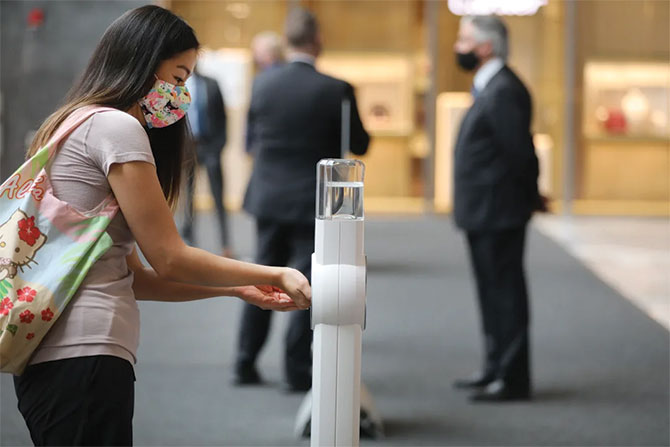By William Richards
As political rhetoric intensifies, parsing perception from reality becomes more challenging, but also more necessary. With the Payroll Protection Program (PPP)
and the CARES Act’s federal unemployment supplement expiring, things are about to become even more challenging in a real dollars and cents sort of way, which will affect more than 30 million small businesses in the U.S.
In the following interview, AIA Chief Economist Kermit Baker, Hon. AIA, gives context to AIA’s monthly Architecture Billings Index (ABI) and helps you navigate
this recession and what’s next.
Things have changed very quickly over the last couple of months, with one day looking better or worse than the day before. I can see the next few weeks unfolding this way: If infection rates drop, confidence in public health and an economic recovery will go up. That’s a future scenario. Presently, we’re in a situation where we’ve prepared for a three-month recession and, now that it’s extending a little longer, things are going to get harder for businesses that aren’t ready for the Payroll Protection Program (PPP) to expire.
In July, we polled architecture firms about PPP and asked them if they got a loan that was now, allegedly, expiring, what would the implications be for staffing? The choices were as follows: I’m going to furlough staff; I’m going to lay off full-time workers; I’m going to lay off part-time and contract workers; I’m going to reduce salaries, or I’m going to reduce hours. Half of all respondents said they’d do nothing because they were, financially, in a good position. The most common responses among the other half were that they’d lay off staff or reduce staff hours.
Confidence as a consumer and confidence as a business owner are often related, and both deal in facts just as much as they deal in perceptions. Our survey of members reminded me of a report early on in the pandemic that said half of all American households were economically affected. That meant the other half was, ostensibly, unaffected. Here’s where facts and perception collide: The half that claimed to be unaffected had the same amount of money coming in, but no way to spend it. They had their vacation budgets for the year, and they had their restaurant budgets for the year, but because of COVID-19, that money wasn’t parked in their bank accounts and counted as income. That’s why we get reports from the Bureau of Economic Research in April that income was “up” despite the recession and despite the reality that a lot of people are taking a big hit. I’m talking about the hourly workers and the broad middle class.
There’s been a lot of talk about why the stock market has done well and why the economy has not, and you have to temper it with the adages that the stock market does not reflect the economy as a whole, and it doesn’t reflect small businesses as a group. The stock market reflects what’s going on with a small number of large companies. Yes, they’re bellwethers, but the economy is a very big place. Despite those gains, if I’m a mom-and-pop restaurant, for instance, I’m in big trouble. If I run a business that relies on in-person transactions and service, I’m in big trouble. If I’m a business that relies on the health of other businesses, I’m in trouble. Now that the PPP and the federal unemployment insurance supplement are going away, so, too, is the safety net. What do the next few weeks hold? I think that will vary depending on where you are in this very big economy.
William Richards
Do you have questions about the economy you’d like AIA to consider? Email economics@aia.org.
This story appears in Issue 1 2020-2021 of the Reflexion Magazine.









